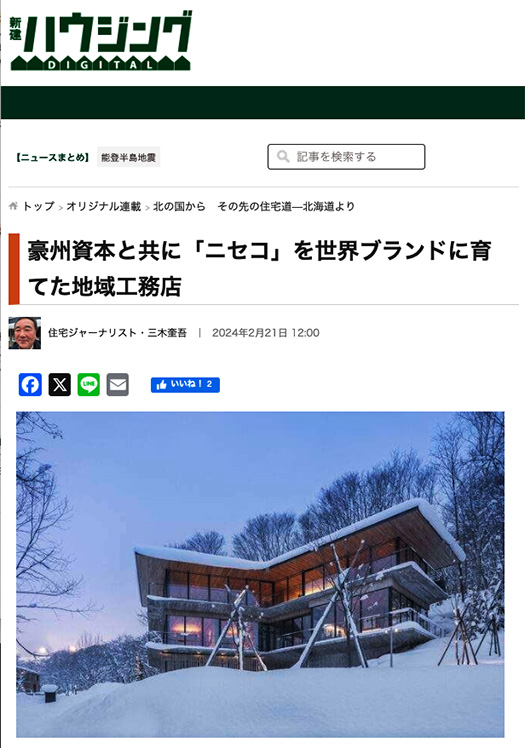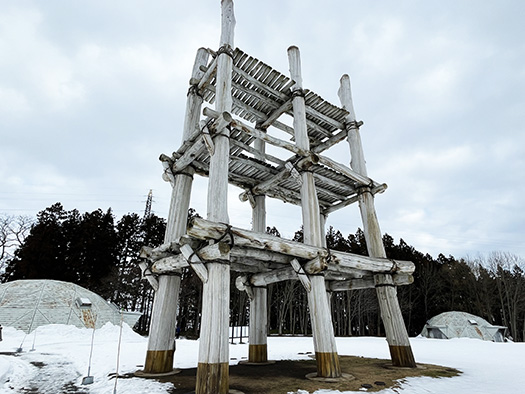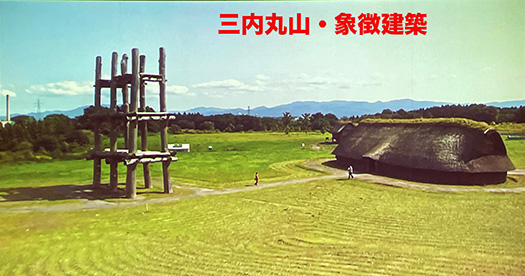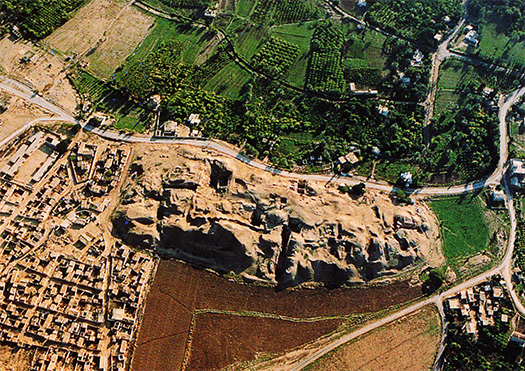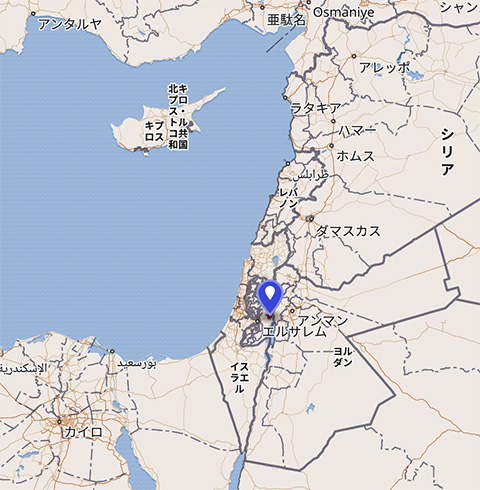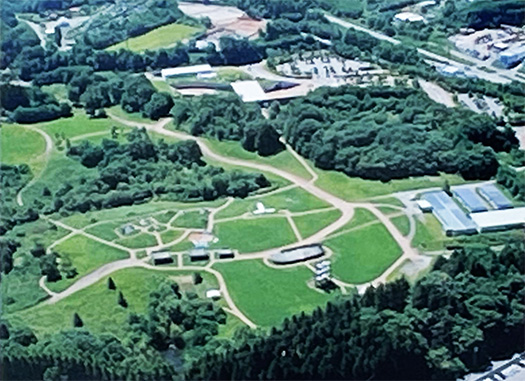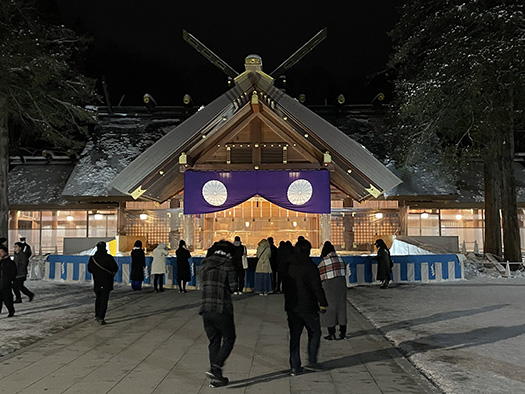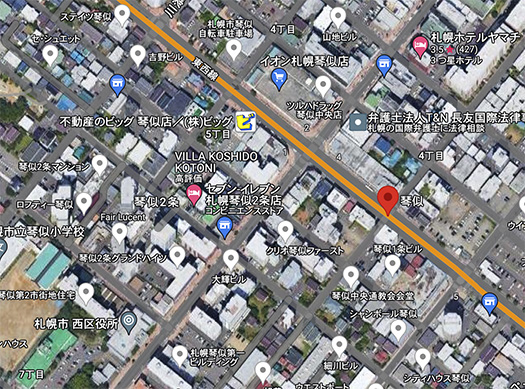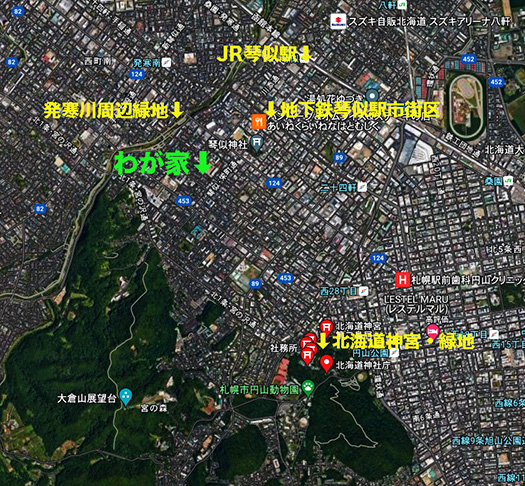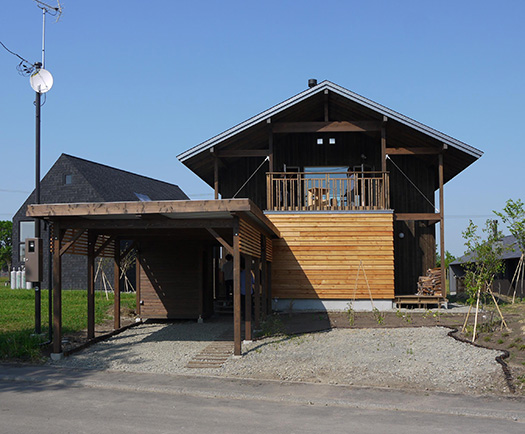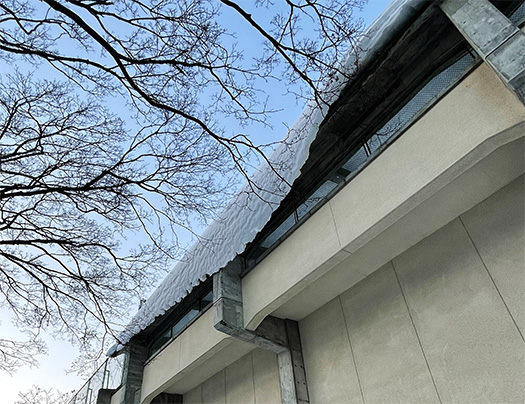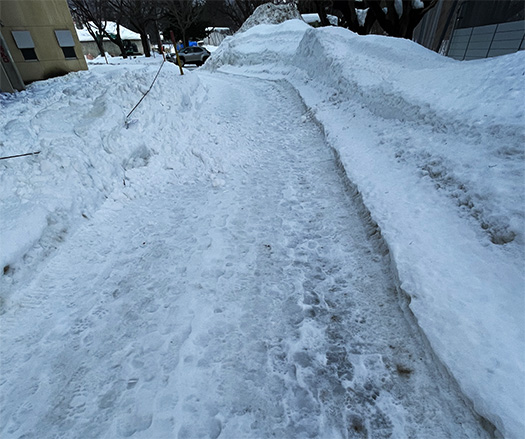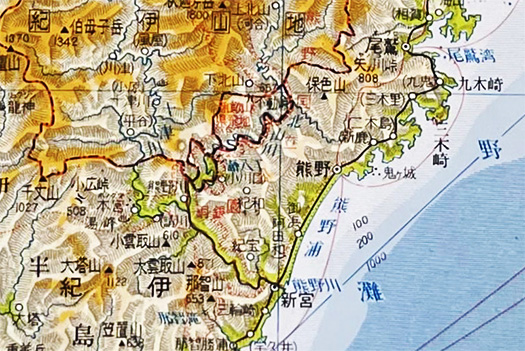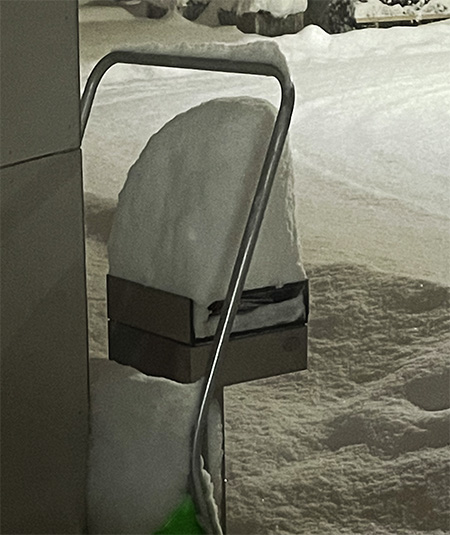

さていろいろ住宅業界関係の情報交流が盛り上がっていた週も終わって、本日から3連休ということですが、札幌は昨日終日の雪景色で、市内でも見通しが50mもないような降雪状況。体力的に疲れもたまっていたこともあって、夕方6時過ぎには、すぐに爆睡モード。年寄りはこういうのだけは「すばやい」(笑)。
ということで本日午前2時過ぎに目覚めたら、ごらんのようなわが家周辺状況。昨日22日に多少はあらあらの除雪をしておいたのですが、その除雪痕跡はきれいになくなっております。すごい・・・。
目視的には50-60cmクラスの積雪のようです。
気象台の警報発令は昨晩で「札幌・江別に大雪警報」ということでしたが、どうも警報発令は後手を踏んでいるように思われ、今回は札幌集中的な降雪に不意を突かれた感じ。
大豪雪のように思うのですがまだ降雪は続いていますので、先行きも見通しにくい。本日東京に移動して住宅撮影のスタッフもいるのですが、さて動けるのかどうか、不安。
いま午前3時過ぎに再度周辺を確認したところ、公共の除雪車は一回除雪に入ったようで、道路側からわが家建物側に向かって除排雪を試みていくことがベストのような様子。また、降雪もやや小降りから止みつつある。
ということですので、ブログ執筆中ですが早々に除雪を開始しようかと考えております。
気温がマイナス7度という発表なので、雪質はたぶん湿度の低いカラッとした粉雪だろうと想像される。豪雪だけれど、除雪作業自体はたぶんややラクかも知れません。いったんブログ執筆を中断して、除雪をしてきたいと思います。その上で、再度記録文として加筆します。
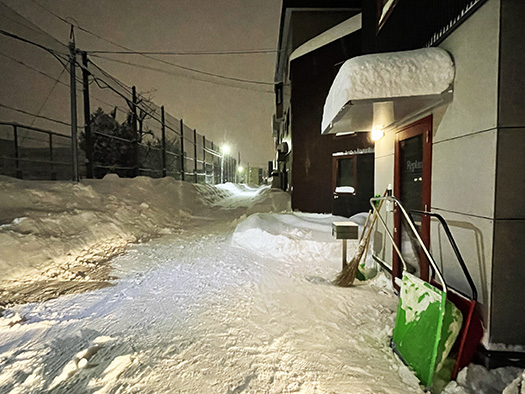
・・・約1時間ほど、除雪してきました。公共の除雪以降も10cm以上は積雪していました。途中雪が収まったかと思ったのですが、依然として小降りが継続。とりあえず応急的にライフライン要素、駐車場に置いているクルマをいったん救出して雪山堆雪箇所に雪を盛り上げて、駐車場の必要面積分プラスアルファ程度の除排雪を行った。その他、最低限のライフライン箇所を除排雪し、敷地の1/2程度の除排雪を行ったところで、いったん休止であります。どうせまだ降雪は続いているので、息長く、お天気具合と対話しながらあくせくせずに当たっていきたい。
このあと、このブログを書き終わってカミさんが起き上がってきたら、いっしょに残務除排雪を行っていきたいと思います。周辺には借りている駐車場スペースが6台分あるので、そちらの用途確保のためにも除排雪を。これが面積的にはたぶん3倍程度にはなるのですね。
ということで雪国の大雪と夜間の除雪の実況中継入り、特別ブログでした。もうこういうのは今年最後にしたいと切に思う次第。・・・
English version⬇
First day of a three-day weekend… Sapporo is getting heavy snowfall.
Sapporo’s snowfall is so concentrated that even the weather station’s forecast couldn’t keep up with it. Or the local “demon” called Ishikari Bay low pressure system is on a rampage. It can’t be helped, can it? …….
The week of various information exchanges in the housing industry has come to an end, and today is the third consecutive holiday, but it snowed all day yesterday in Sapporo, and even in the city, the visibility was as low as 50 meters. I was physically exhausted and fell asleep right after 6 pm. Old people are quick in this kind of thing (laugh).
So when I woke up a little after 2:00 a.m. today, the situation around my house was as you can see. I had removed some of the rough snow yesterday, but all traces of it are gone. Amazing….
Visually, it looks like 50-60 cm of snow has accumulated.
The weather bureau issued a “heavy snow warning for Sapporo and Ebetsu” last night, but the warning seems to have been issued late, and this time we were caught off guard by the concentrated snowfall in Sapporo.
It seems like a heavy snowfall, but the snowfall is still continuing, so it is difficult to predict the future. Some of our staff members are moving to Tokyo today to take pictures of houses, but I am not sure if they will be able to move.
I checked the area again after 3:00 a.m., and it seems that the public snowplows have started clearing the snow once, and it seems that it is best to try to remove the snow from the road side toward our building. Also, the snowfall has stopped after a slight drizzle.
So I am thinking of starting snow removal as soon as possible, even as I write this blog.
Since the temperature is -7 degrees Celsius, I imagine that the snow will probably be dry and powdery with low humidity. Although it is a heavy snowfall, the snow removal work itself may be a little easier. I would like to stop writing this blog for a while and go to the snow removal site. Then I will add the record again.
…I have been plowing snow for about an hour. There was still more than 10 cm of snow on the ground since the public snow removal. We thought the snow had stopped on the way, but it still continued to fall lightly. For now, we temporarily rescued the lifeline elements, the cars in the parking lot once and heaped up snow at the snow pile composting points, and removed snow from the necessary surface area of the parking lot plus about an additional amount. We also removed snow from the minimum lifeline points, and once about 1/2 of the site was cleared of snow, we paused. The snowfall is still continuing anyway, so we will continue to work without rushing, while interacting with the weather conditions.
After I finish writing this blog and my wife wakes up, we will go to the snow removal site together. There are six rented parking spaces in the vicinity, so we will also remove snow to secure their use. So this will probably be about three times the area.
So this was a special blog with a live report of heavy snowfall and nighttime snow removal in snow country. I am really hoping that this will be the last time this year. I hope this will be the last time this kind of thing will happen this year.
Posted on 2月 23rd, 2024 by 三木 奎吾
Filed under: 日本社会・文化研究 | No Comments »


